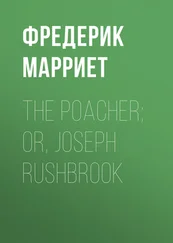But these supplies would not, of course, be sufficient for a great number of men; ten thousand for example. A water-hole would be drained by the first two or three hundred men that might arrive, and the remainder would be obliged to go without any. Then, unless perchance they should fall upon a large herd of buffaloes, they would never be able to find the means of sustaining life. A buffalo, or three or four deer can be killed every day, by hunters out of the tract of an expedition; this supply would suffice for a small war party, but it would never do for an army.
Except in the buffalo ranges, where the Comanches, the Apaches, and the Southern Shoshones will often go by bands of thousands, the generality of the Indians enter the path in a kind of echelonage ; that is to say, supposing the Shoshones to send two thousand men against the Crows, they would be divided into fifteen or twenty bands, each commanded by an inferior chief. The first party will start for reconnoitering. The next day the second band, accompanied by the great chiefs, will follow, but in another track; and so on with a third, till three hundred or three hundred and fifty are united together. Then they will begin their operations, new parties coming to take the place of those who have suffered, till they themselves retire to make room for others. Every new comer brings a supply of provisions, the produce of their chase in coming, so that those who are fighting need be in no fear of wanting the necessaries of life. By this the reader will see that a band of two thousand warriors, only four or five hundred are effectually fighting, unless the number of warriors agreed upon by the chiefs prove too small, when new reinforcements are sent forward.
The Tonquewas tribe sprang from the Comanches many years ago.
The word Pawnee signifies " exiled ;" therefore it does not follow that the three tribes bearing the same name belong to the same nation.
The Grand Pawnees, the tribe among whom Mr. Murray resided, are of Dahcotah origin, and live along the shores of the river Platte; the Pawnee Loups are of the Algonquin race, speaking quite another language, and occupying the country situated between the northern forks of the same river. Both tribes are known among the trappers to be the "Crows of the East;" that is to say, thieves and treacherous. They cut their hair short except on the scalp, as is usual among the nations which they have sprung from.
The third tribe of that name is called Pawnee Pict; these are of Comanche origin and Shoshone race, wearing their hair long, and speaking the same language as all the western great prairie tribes. They live upon the Red River, which forms the boundary betwixt North Texas and the Western American boundary, and have been visited by Mr. Catlin, who mentions them in his work. The Picts are constantly at war with the two other tribes of Pawnees; and though their villages are nearly one thousand miles distant from those of their enemy, their war-parties are continually scouring the country of the "Exiles of the East"–" Pa-wah-nêjs ."
The Crows are gallant horsemen; but although they have assumed the manners and customs of the Shoshones, they are of the Dahcotah breed. There is a great difference between the Shoshone tribes and the Crows. The latter want that spirit of chivalry so remarkable among the Comanches, the Arrapahoes, and the Shoshones–that nobility of feeling which scorns to take an enemy at a disadvantage, I should say that the Shoshone tribes are the lions and the Crows the tigers of these deserts.












